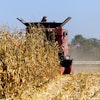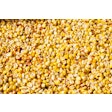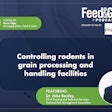There is no doubt that the past year has been one of challenging times for all businesses and your feed and grain business is no exception. You may be tempted to move into “survival mode” in times like this, but now is the very time to be proactive, adapt your business to the needs of your customers before your competitors do, and ultimately you will be more profitable. Your customers’ needs and desires are changing and an excellent strategy is to actively explore these. In this column, we will provide you with some key results from the 2008 Large Commercial Producer survey that was conducted by the Center for Food and Agricultural Business at Purdue University. This survey, originally undertaken in 1993, has been completed every five years to gain insight about the attitudes and buying behaviors of large producers. A unique aspect of the 2008 survey is that specific information on feed, seed and crop protection was collected and is reported in this article, compared to previous services where expendables were considered as one group.
The information that we report here is targeted to the feed and grain sector, but is really just the “tip of the iceberg.” More than 2,300 producers in the corn/soybean, wheat/barley/canola, cotton, swine, dairy, beef and fruit/nut/vine/vegetable segments were surveyed in early 2008. These respondents were further categorized with more than 1,400 producers with annual sales greater than $500,000 and more than 900 producers with annual sales between $100,000 and $499,999. These producers were selected from key states accounting for 75% of total U.S. production for each of the seven enterprises represented. A full report of this survey can be found at https://www.agecon.purdue.edu/cab/programs/lcp/National_Conference_Themes_2008lowres.pdf
In the following sections, we present key results from questions that we asked the commercial producers regarding the factors they consider when making purchase decisions, how they perceive differences across suppliers and brands, their important sources of information, and their risk management strategies. We conclude with some discussion of implications for management.
Survey results
In the survey we asked producers to respond to the question: “When you choose a supplier for the product categories of seed, crop protection and feed, how is your decision influenced by the following factors?” Each respondent was asked to assign a percentage to the five factors of Convenience/Location, Customer Service/Information, Price, Product Performance, and Support Service, so that the total added to 100%. The average percentage for each group is reported in Table 1.
| Table 1: Factors influencing the purchase decision for expendables of seed, crop protection and feed | Seed | Crop protection | Feed |
| Convenience/Location | 21.79% | 19.73% | 29.15% |
| Customer Service/Information (responsiveness, follow-up, advice, etc.) | 18.75% | 18.84% | 19.89% |
| Price | 21.01% | 23.08% | 22.14% |
| Product Performance (yield, durability, rate of gain, etc.) | 26.79% | 26.4% | 15.92% |
| Support Service (delivery, repair, application, etc.) | 11.67% | 11.95% | 12.91% |
The results suggest that commercial producers have different preferences depending on the product category in question. When purchasing seed and crop protection supplies, commercial producers place the greatest weight on product performance (almost 27%) and the least weight on support service (almost 12%). For feed purchases, convenience/location is the most important factor with an average weighting of almost 30%. This suggests that producers — when purchasing feed — are looking to buy local for the convenience, and perhaps also due to the bulky nature of feed. Respondents also rated price as very important, with price being the second most important factor for feed and crop protection purchases and a close third most important factor for seed purchases.
Differences in offerings
Producers were asked questions related to where they viewed similarities and differences with respect to price and quality of the expendables they purchase (Table 2), with the results separated for crop and livestock producers. Livestock producers identified perceiving greater differences in price and quality compared to crop producers. Differences in the quality of services from one local supplier to another was very important for both crop and livestock producers with 57% of crop producers and over 60% of livestock producers reporting that they “agreed” or “strongly agreed” with the statement that there are often significant differences in the quality of services. Given that producers perceive significant differences among suppliers with respect to both price and quality — are you doing the most to take advantage of this for your business? Evaluate the level of service that you are offering and how that fits the needs of your key target customers. Are there ways that you could adapt your service offerings (either increase or decrease) to be a better fit with your customers and provide more profit for your business?
| Table 2: Perceptions of differences in offerings among suppliers | Percentage of respondents selecting "agree" or "strongly agree" | |
| Crop producers | Livestock producers | |
| For expendable items, there are often significant price differences for similar products from one local supplier to another. | 38.2% | 45.6% |
| There are often significant differences in the quality of services from one local supplier to another. | 57.0% | 60.2% |
| There are often significant differences in the quality of information from one local supplier to another. | 41.2% | 45.4% |
Branding and distribution
In addition to capturing information on producers’ perceptions of price and quality differences, respondents were also asked about their preferences when making purchase decisions. Over 60% of respondents indicated that they were willing to pay slightly more to purchase locally. One can conclude from this result that there are opportunities for local suppliers to play a vital role in the marketplace. About one-third (30.9% of crop producers and 35.9% of livestock producers) preferred to buy most of their expendable items from one supplier. This result suggests that there is significant opportunity for you to attract new customers to your business — with about two-thirds of the customers buying expendables from more than one supplier. Over one-half of the respondents noted that the purchasing of inputs is becoming a more time-consuming activity, suggesting that there may be opportunities to serve commercial producers. There are opportunities for your business if you can find ways to provide information that is helpful for your producer customers as they make their purchase decisions. This opportunity also presents a challenge, as you need to make sure that your cost to provide the information can be covered with the prices the producers are willing to pay. Only 28% of crop producers and one-third of livestock producers identified that they felt expendable branded products provided higher levels of performance, suggesting that a significant percentage of all producers are not committed to specific brands and thus are open to purchases of generic products (Table 3).
| Table 3: Opinions regarding branding and distribution | Percentage of respondents selecting "agree" or "strongly agree" | |
| Crop producers | Livestock producers | |
| I am willing to pay slightly more to buy my inputs from locally owned suppliers. | 62.3% | 60.8% |
| I prefer to buy most of the expendable items I need from one supplier. | 30.9% | 35.9% |
| Purchasing inputs to use on my farm is becoming a more time- consuming activity in my farm business. | 61.5% | 53.4% |
| For expendable items, branded products offer a higher level of performance relative to generic products. | 28.2% | 33.7% |
Sources of information
Agricultural producers in the feed and grain business are faced with an array of choices when selecting their providers. As a provider, you are also faced with selecting the best communication media to communicate effectively and efficiently with your customers. Respondents were asked to identify the level of importance they placed on different sources of information on a five-point scale ranging from “1=never useful” to “5=always useful.” As reported in Figure 1, the most important information source was the local sales representative followed by other farmers and then manufacturer representatives. Crop producers reported these sources of information were slightly more useful as compared with livestock producers.
Information is a key to success in business and producers have many sources for their information. Figure 2 reports the usefulness of different communications media. Livestock producers often found these media slightly more useful than crop producers. General farm publications along with crop and livestock publications were identified as the most important media sources, followed closely by agricultural newspapers. Although not shown in the graph, the survey also revealed that younger producers are as comfortable with electronic media as with print media. How are you communicating with your customers? To communicate directly to your customers, are you and your salespeople using the media they find to be the most useful? How are you preparing for the new generation of customers? Do your websites have information that complements what’s available in print?
Managing risk
Respondents were asked about the strategies they utilized to manage the risk inherent in their farm business operation. As reported in Figure 3, membership in a cooperative was the most commonly reported activity, followed by using contracts and the futures and options markets to forward price their outputs and inputs. Crop producers were more likely to use forward pricing as compared with livestock producers.
What do the survey results mean for managing your business?
The results of the 2008 Large Commercial Producer survey from Purdue University’s Center for Food and Agricultural Business can provide important insights for you and your grain and feed business. While we all know everyone cares about price, the survey reveals price is not the only thing that matters. Performance and convenience are also important. If you are in a position such that you cannot compete on price, you may be able to highlight the convenience you provide for your customers when they purchase locally. Keep in mind that convenience means different things to different customers, including: providing the right information, providing the right services, and most likely providing the appropriate mix of products to enable your customers to practice sole sourcing. As you consider the mix of services you are offering, pay particular attention to your key target customers and ensure that you are not over or under delivering when it comes to services. Your product/service mix can also be thought of as your “branding” strategy, and needs to be communicated through the right channels (those channels that are viewed as most credible) to your target customers. In addition, are you thinking ahead? How satisfied are your younger target customers with your “brand”? Be sure and remember that over 60% of your producers reported they were willing to pay more to purchase locally — so examine your customer base and, when appropriate, highlight the local aspect of your business. Keep in mind that one-third or fewer producers felt branded products provide higher levels of performance so once again, attention to your target customers is vital. For those customers who prefer branded products, you want to promote the branded products you carry, while for the other customers, focus on the generic products you carry. Take out a pencil and piece of paper and jot down some answers to these questions as they relate to your business. Then write down the two or three aspects of your product/service mix that fit the needs of your target customers and that you can provide profitably. This is the foundation you can use as you continue the ongoing planning for your business.


















